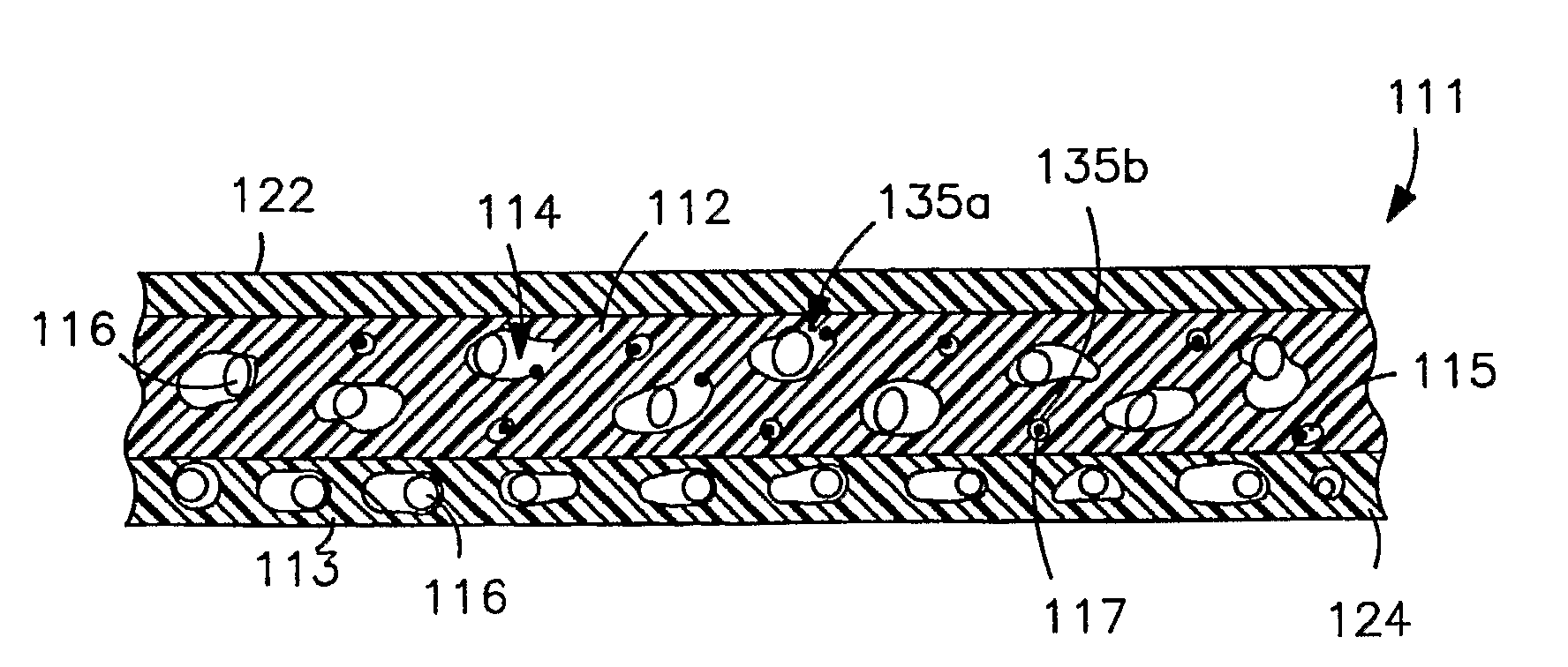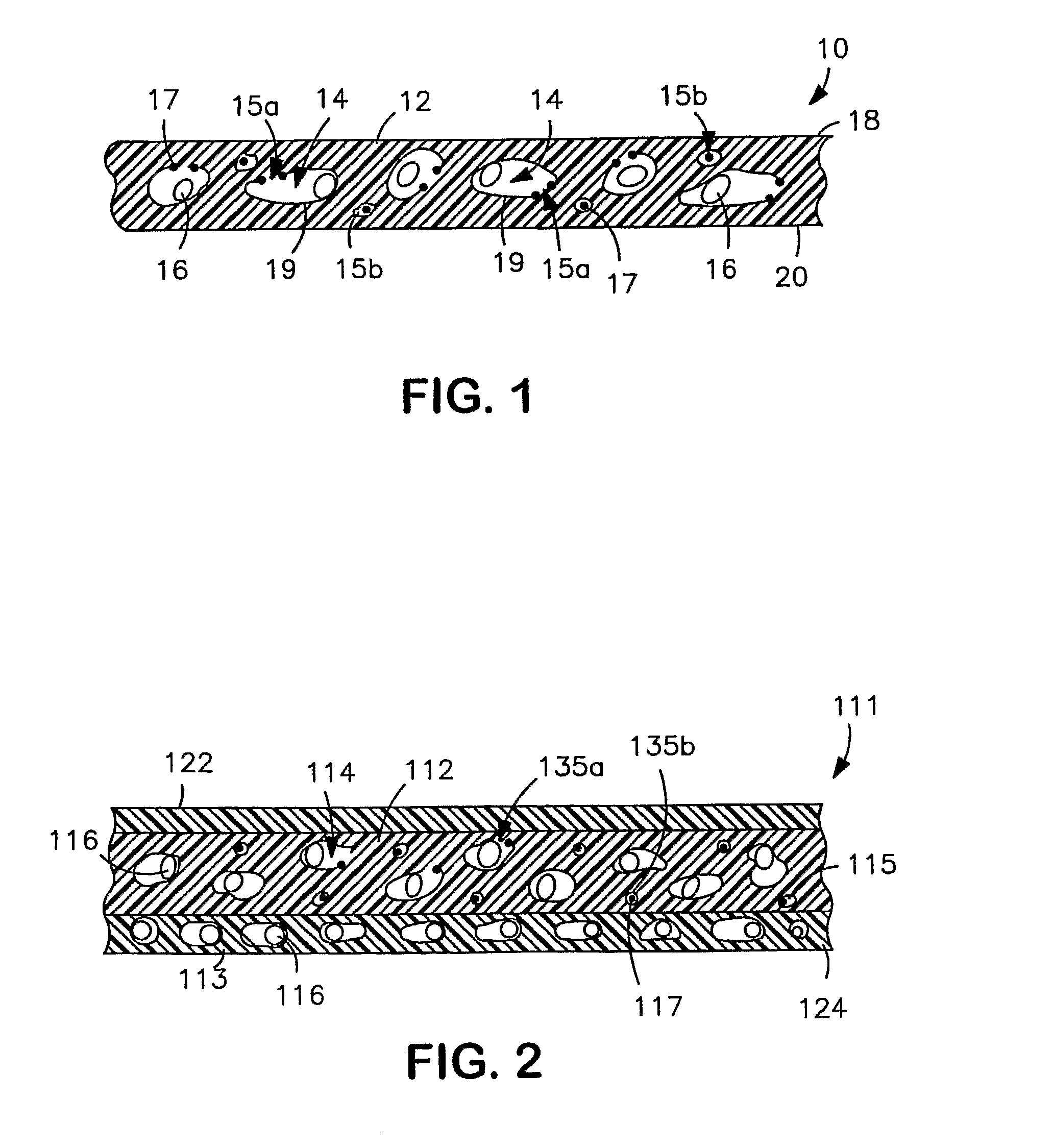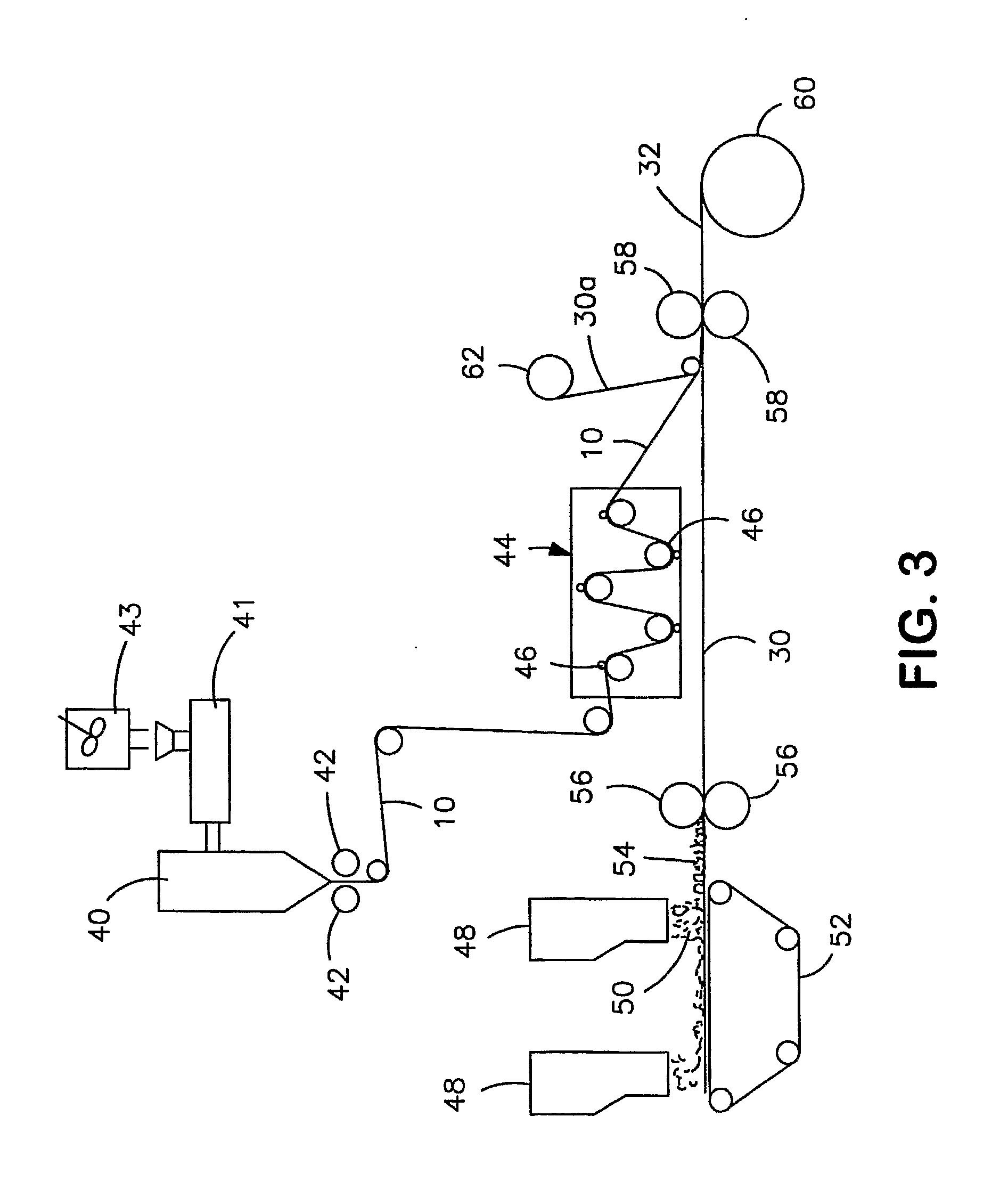Highly breathable biodegradable films
a biodegradable film, high breathability technology, applied in the field of high breathability biodegradable films, can solve the problems of limiting the extent to which the breathability of the biodegradable film may be increased using conventional techniques, and affecting the quality of the produ
- Summary
- Abstract
- Description
- Claims
- Application Information
AI Technical Summary
Benefits of technology
Problems solved by technology
Method used
Image
Examples
example 1
[0088]Biodegradable films were prepared using an aliphatic-aromatic copolyester available from BASF under the designation “Ecoflex® F BX 7011.” Two groups of film samples were prepared. Specifically, one group of film samples (“Sample A”) contained the Ecoflex® copolyester and a calcium carbonate filler available from Omya, Inc. under the designation “Omyacarb™ 2sst.” The other group of film samples (“Sample B”) contained the Ecoflex® copolyester with the Omyacarb™ calcium carbonate filler, a titanium dioxide filler available from DuPont under the designation “R101”, and alpha-tocepherol available from Ciba Specialty Chemicals under the designation Irganox® E 201. The composition of each group of samples is set forth in more detail in Table 1.
[0089]To form the film samples, the Ecoflex® copolyester was initially dried to 200 ppm and measured using an infrared weight loss moisture analyzer. The raw materials of each group were then compounded using a Werner & Pfleiderer (Ramsey, N.J....
example 2
[0092]Biodegradable films were prepared using an aliphatic-aromatic copolyester available from BASF under the designation “Ecoflex® F BX 7011.” Four groups of film samples were prepared. The first group of film samples (“Sample C”) contained the Ecoflex® copolyester and a calcium carbonate filler available from Omya, Inc. under the designation “Omyacarb™ 2sst.” The second group of film samples (“Sample D”) contained the Ecoflex® copolyester, the “Omyacarb™ 2sst” calcium carbonate filler, and a titanium dioxide filler available from DuPont under the designation “R101.” The third group of film samples (“Sample E”) contained the Ecoflex® copolyester and a micritic calcium carbonate filler available from Specialty Minerals, Inc. under the designation “MD1517.” Finally, the fourth group of film samples (“Sample F”) contained the Ecoflex® copolyester, the “MD1517” micritic calcium carbonate filler, and the “R101” titanium dioxide filler. The composition of each group of samples is set for...
PUM
| Property | Measurement | Unit |
|---|---|---|
| Temperature | aaaaa | aaaaa |
| Temperature | aaaaa | aaaaa |
| Fraction | aaaaa | aaaaa |
Abstract
Description
Claims
Application Information
 Login to View More
Login to View More - R&D
- Intellectual Property
- Life Sciences
- Materials
- Tech Scout
- Unparalleled Data Quality
- Higher Quality Content
- 60% Fewer Hallucinations
Browse by: Latest US Patents, China's latest patents, Technical Efficacy Thesaurus, Application Domain, Technology Topic, Popular Technical Reports.
© 2025 PatSnap. All rights reserved.Legal|Privacy policy|Modern Slavery Act Transparency Statement|Sitemap|About US| Contact US: help@patsnap.com



